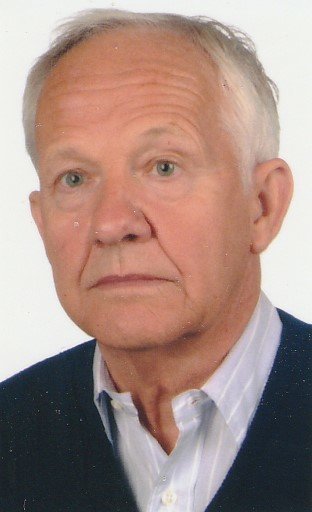About
How did the concept originate?
As a technological entrepreneur, I committed myself to the specific technology which can be provided a versatile, adaptable,  State-of-art waste remediation platform for processing the most common waste stream within one integrated system. To provide a versatile, adaptable, state-of-art waste remediation platform, I obtained a Battelle Memorial Institute license for vitrification technology to effectively treat and dispose of municipal waste materials without creating undue environmental contamination. At the same time, I initiated research on the application of vitrification technology for the treatment of phosphogypsum (PG), a by-product of processing phosphate ore into fertilizer with sulfuric acid. It is radioactive due to naturally occurring uranium and radium in the phosphate ore. With two of the US Department of Energy's (DOE) Pacific Northwest National Laboratory (PNNL) vitrification technology leading researchers, Chris Chapman and Richard Peters, I initially obtained research grants from the Florida Institute of Phosphate Research (FIPR) to investigate the manufacture of vitrified glass products from PG. Manufacture was successfully demonstrated on a pilot scale; however, the economics of the process would not justify commercial implementation due to the energy requirements of the process.
State-of-art waste remediation platform for processing the most common waste stream within one integrated system. To provide a versatile, adaptable, state-of-art waste remediation platform, I obtained a Battelle Memorial Institute license for vitrification technology to effectively treat and dispose of municipal waste materials without creating undue environmental contamination. At the same time, I initiated research on the application of vitrification technology for the treatment of phosphogypsum (PG), a by-product of processing phosphate ore into fertilizer with sulfuric acid. It is radioactive due to naturally occurring uranium and radium in the phosphate ore. With two of the US Department of Energy's (DOE) Pacific Northwest National Laboratory (PNNL) vitrification technology leading researchers, Chris Chapman and Richard Peters, I initially obtained research grants from the Florida Institute of Phosphate Research (FIPR) to investigate the manufacture of vitrified glass products from PG. Manufacture was successfully demonstrated on a pilot scale; however, the economics of the process would not justify commercial implementation due to the energy requirements of the process.
A subsequent grant from FIPR addressed the energy issue by attempting to recover sulfur in the process that could be utilized to drive the process. A method was developed whereby energy co-produced in sulfuric acid production could be substantially increased. During these investigations, it became apparent that the energy values available through sulfur combustion are potentially enormous. Current energy production from sulfur combustion is limited to co-production at sulfuric acid production facilities, which provides sufficient energy to power the phosphate fertilizer production complex. The only large-scale industrial practice that can utilize sulfur dioxide is sulfuric acid production. More than 90% of the world’s sulfur consumption is dedicated to producing sulfuric acid. The vast majority of this is produced by the global phosphate fertilizer industry, which employs sulfuric acid in the acidulation of phosphate rock for phosphoric acid production.
It was thought that if an alternative means of dealing with the products of sulfur combustion could be found, energy derived through sulfur combustion could be freed from its dependence on sulphuric acid production, thereby unlocking the key to the widespread utilization of sulfur as a source of energy.
PUBLICATIONS
Development of Process to Manufacture Glass/Glass-Ceramic Products from Phosphogypsum. Chris Chapman, Bogdan Wojak, and Richard Peters; with P.K. Bhattacharjee - Vitrification International Technologies, Inc.; prepared under a grant sponsored by the Florida Institute of Phosphate Research, Bartow, Florida. FIPR Publication no.01-153-221. April 2006.
Development of Process to Manufacture Glass Products from Phosphogypsum. Chris Chapman, Richard Peters, and Bogdan Wojak – Vitrification International Technologies, Inc.; prepared under a grant sponsored by the Florida Institute of Phosphate Research, Bartow, Florida. FIPR Publication no. 01-153-163. April 1999.
PATENTS
Sulfur-assisted Carbon Capture and Utilization (CCU) Processes and Systems, patents: CA2931223, US9802153.
Sulfur-assisted Carbon Capture and Storage (CCS) Processes and Systems, patent: CA2898519, US10066834.
Methods and Systems for Transporting Sulphur as a COS, patent: CA2791963.
Method and Systems for Sulphur Combustion, patents: CA2813125, CA2700746, EP2203680.
Gas Turbine Topping in Sulfuric Acid Manufacture, patents: CA2663131, EP2069233.
Gas Turbine Topping Device in a System for Manufacturing Sulphuric Acid and Method of Using Turbine To Recover Energy in Manufacture of Sulphuric Acid, patents: CA2639747, US7543438.
ACKNOWLEDGEMENTS
Sulverenergy gratefully acknowledges the generous funding from Florida Industrial and Phosphate Research Institute (FIPR) and Thomas Dutcher, who has forty-seven years of project engineering, engineering design, and construction management experience, and as a successful business owner. His work includes over twenty years of incineration and waste-to-energy engineering development.
Advisory and literature review support provided by an exceptionally knowledgeable and experienced team of dedicated specialists, Mike Lloyd and Gary Albarelli of Florida Industrial and Phosphate Research Institute, is also greatly appreciated.
The chemistry, thermodynamic, and energy/mass balances for the method of sulfur combustion as the kinetic simulation of the reduction of sulfur dioxide (SO2) by carbonyl sulfide (COS) have been performed by Dr. Kunal Karan of the Department of Chemical Engineering of Queens University in Kingston, Ontario.
A special thanks to Dr. Laszlo T. Nemeth, co-inventor of the CO2/COS conversion process, for several thoughtful and stimulating discussions of this work.